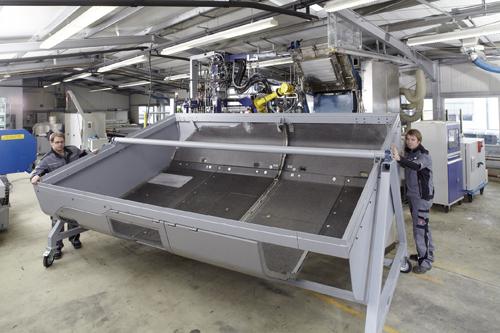May 4, 2012

Both glass-fiber and carbon-fiber composites are being used more often in commercial aircraft and automobiles. Now, members of a German partnership have prototyped a new polyurethane-based glass fiber sandwich material for the enclosure that houses a diesel train's engine. The material saves both weight and cost over its steel and aluminum counterpart.
A diesel train engine's enclosure is located underneath the passenger compartment and must be able to withstand high mechanical loads to support all that weight, as well as to protect the engine from impact. The enclosure material must also provide chemical resistance to prevent oil leaks and is subject to strict fire protection requirements, according to European standard CEN/TS 45545.

The partnership's members are top players in train manufacturing, materials, manufacturing processes, and R&D. They include Bombardier, Bayer MaterialScience, DECS GmbH, and KraussMaffei, as well as the Fraunhofer Institute for Chemical Technology ICT, the German Aerospace Center (DLR)'s Institute of Vehicle Concepts, the University of Stuttgart, and the Karlsruhe Institute for Technology.
The material's construction is designed as a sandwich for greater stability, based on Bayer MaterialScience's Baypreg polyurethane spray system. Unlike many sandwich constructions that are based on glass fiber-reinforced structures with a rigid foam core and manufactured in a complex process using epoxy or polyester resins, the new material is made with a honeycomb core and is processed much faster. Parts are manufactured directly in their final, complex, three-dimensional shape using a combined spray and press process.
KraussMaffei is one of the partners of a German team that developed the innovative SpriForm hybrid process that combines injection molding and thermoforming. That process has produced lightweight, crash-resistant automotive components by combining thermoformed parts made of continuous, fiber-reinforced thermoplastic sheets with thermoplastic injection-molded parts. KraussMaffei commercialized that process as its own FiberForm process, with shorter cycle times.
About the Author(s)
You May Also Like



